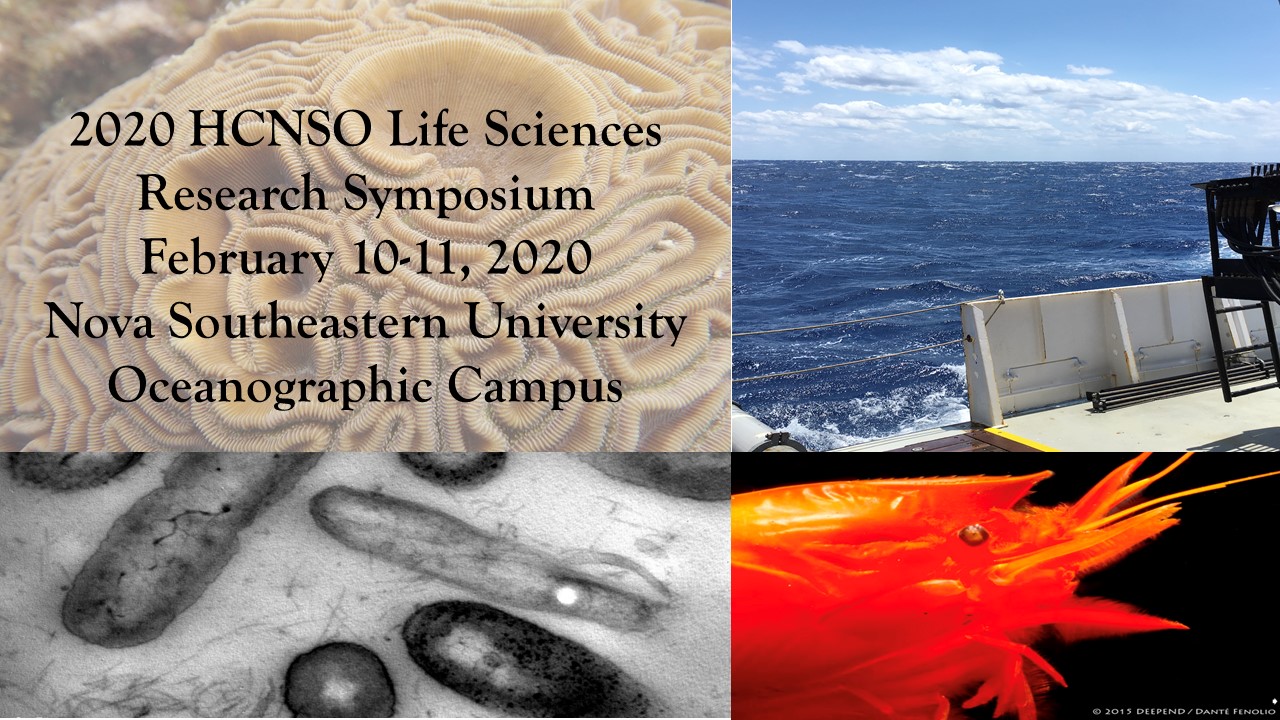Yellow Gold: Urine as a Resource for Wild Animal Genomes
Location
HCNSO Guy Harvey Oceanographic Center Nova Southeastern University
Start
2-11-2020 2:00 PM
End
2-11-2020 2:15 PM
Type of Presentation
Oral Presentation
Abstract
The ability to generate complete and accurate genomes from wild animal populations is critical to our understanding of population dynamics of at risk species in their natural habitats. As many conservation biologists are well aware, it is not always possible to catch and release animals with the intent to collect samples in order to study their genetic material. This is of course an impossibility with animals classified as endangered according to IUCN (International Union for Conservation of Nature). One solution exercised in the last decade has been the use of animal feces as a source of host DNA. However, feces possess their own unique set of challenges including the overabundance of microbial genetic material and the presence of enzymes that damage what little host DNA is present. Although some methodologies have been developed to capture host genomes from feces, there are limitations to such analyses, including sample availability, cost, and laboratory workload. Here, we utilize multiple capture methods from a variety of sources (feces, urine, dentine, and dental calculus) obtained from ten wild chimpanzees at Gombe National Park in Tanzania. We assess and compare the success of a variety of capture methods (traditional shotgun, full human genome, full chimpanzee genome, and full human exome) through Next Generation Illumina Sequencing. Our results show that urine contained the highest fraction of host genetic material, which led to more regions of the genome covered as well as deeper coverage of coding sequences within the genome. Urine far outperformed other biological sources in allelic dropout rates as well, with less ambiguity of variant sites being detected compared to feces, dentin, and dental calculus. These data are suited to promote the use of urine as robust reservoir for host genomic information, which can be collected in many cases without perturbation of the wild animal of interest. This source will prove useful to population geneticists and conservationist alike. This research was undertaken collaboratively with several other universities outside of NSU: Arizona State University, University of Utah, Duke University, University of Minnesota, and University of Pennsylvania.
Yellow Gold: Urine as a Resource for Wild Animal Genomes
HCNSO Guy Harvey Oceanographic Center Nova Southeastern University
The ability to generate complete and accurate genomes from wild animal populations is critical to our understanding of population dynamics of at risk species in their natural habitats. As many conservation biologists are well aware, it is not always possible to catch and release animals with the intent to collect samples in order to study their genetic material. This is of course an impossibility with animals classified as endangered according to IUCN (International Union for Conservation of Nature). One solution exercised in the last decade has been the use of animal feces as a source of host DNA. However, feces possess their own unique set of challenges including the overabundance of microbial genetic material and the presence of enzymes that damage what little host DNA is present. Although some methodologies have been developed to capture host genomes from feces, there are limitations to such analyses, including sample availability, cost, and laboratory workload. Here, we utilize multiple capture methods from a variety of sources (feces, urine, dentine, and dental calculus) obtained from ten wild chimpanzees at Gombe National Park in Tanzania. We assess and compare the success of a variety of capture methods (traditional shotgun, full human genome, full chimpanzee genome, and full human exome) through Next Generation Illumina Sequencing. Our results show that urine contained the highest fraction of host genetic material, which led to more regions of the genome covered as well as deeper coverage of coding sequences within the genome. Urine far outperformed other biological sources in allelic dropout rates as well, with less ambiguity of variant sites being detected compared to feces, dentin, and dental calculus. These data are suited to promote the use of urine as robust reservoir for host genomic information, which can be collected in many cases without perturbation of the wild animal of interest. This source will prove useful to population geneticists and conservationist alike. This research was undertaken collaboratively with several other universities outside of NSU: Arizona State University, University of Utah, Duke University, University of Minnesota, and University of Pennsylvania.


